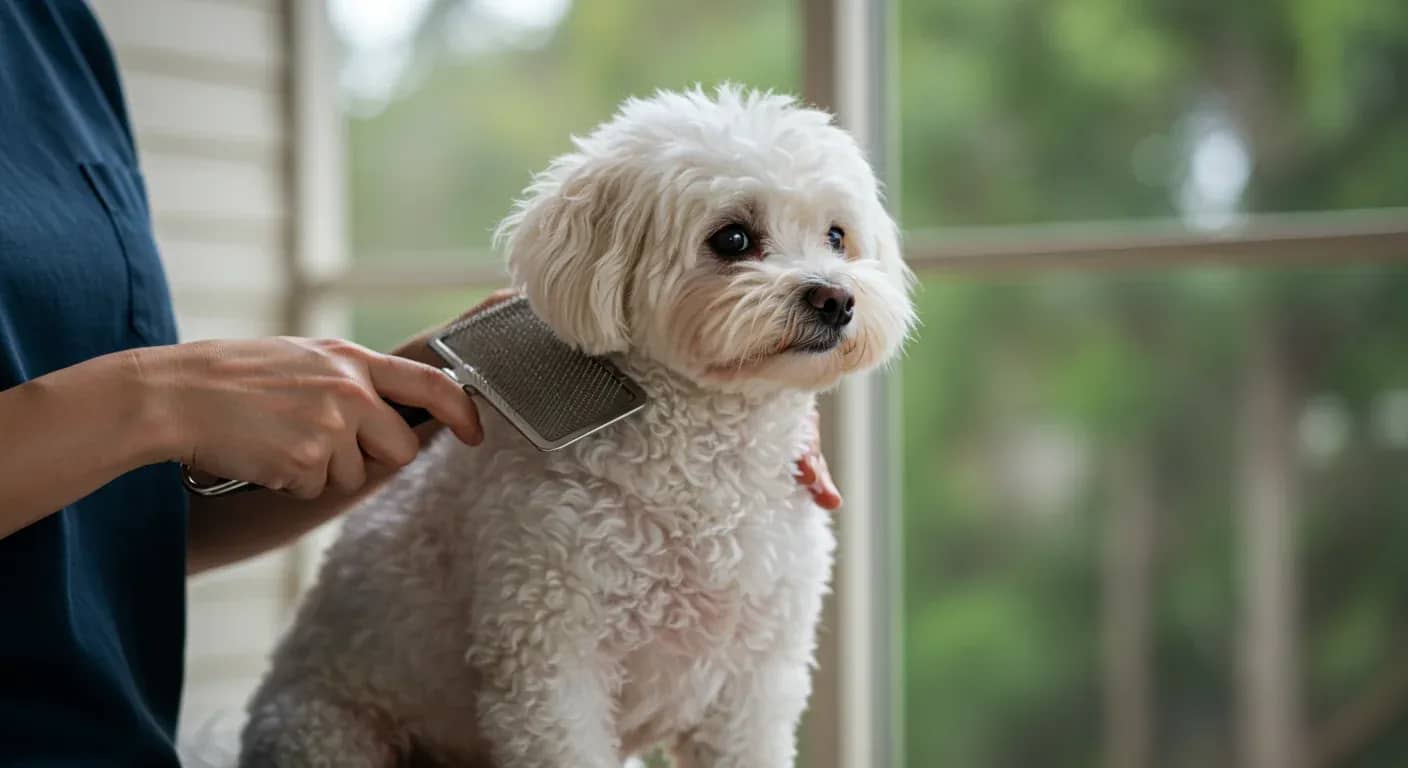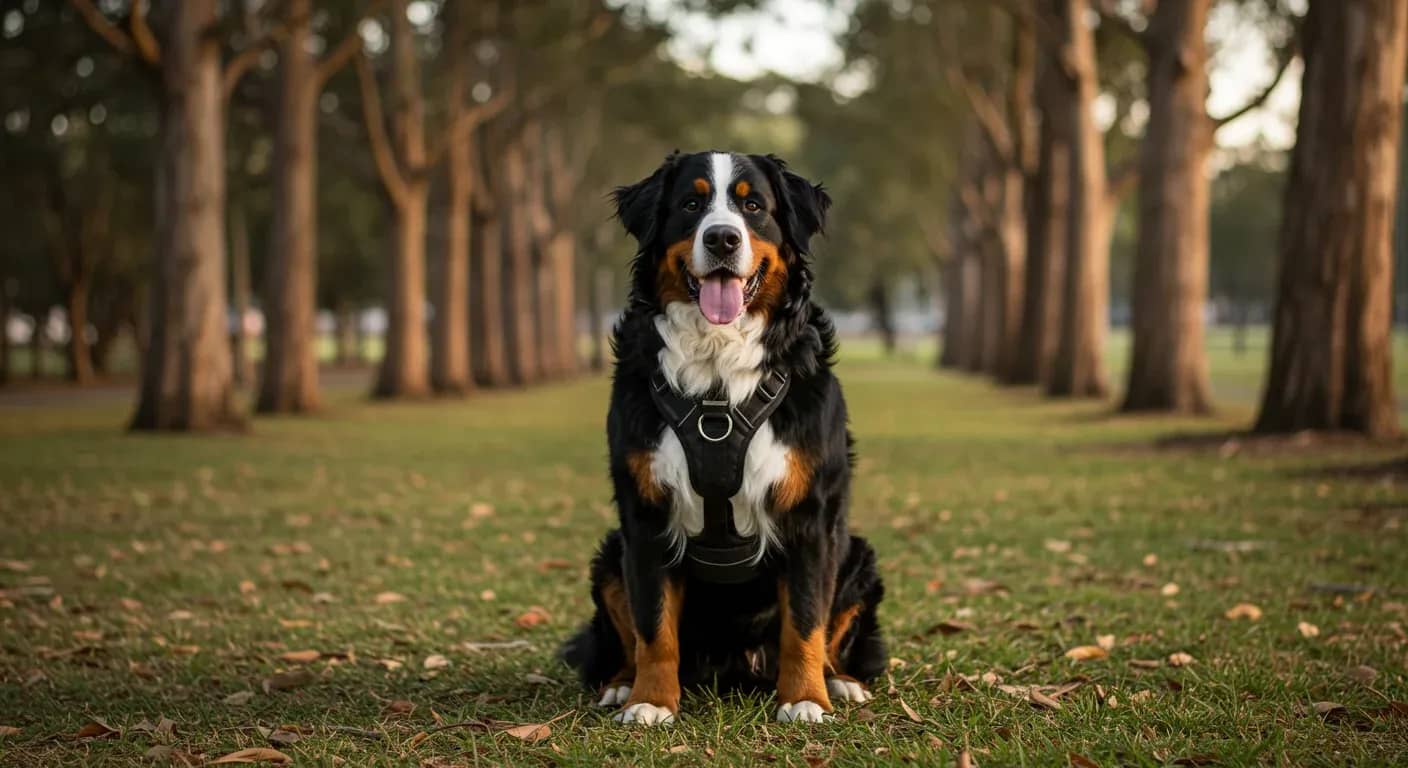At a glance
- Australian Shepherds need harnesses with multiple adjustment points to accommodate their 40-60 pound muscular frame
- Front-clip attachments help manage pulling behaviour common in this energetic herding breed
- Durable, padded materials prevent chafing during vigorous activity and long wear periods
- Top picks include the Embark Adventure, Rabbitgoo Tactical, and PetSafe Easy Walk harnesses
You might notice your Australian Shepherd pulling enthusiastically on walks, their strong herding instincts driving them forward with determination. This energetic breed presents unique challenges when it comes to harness selection, requiring equipment that can match their strength while providing comfort during extended outdoor adventures.
Many Aussie owners discover that standard harnesses simply don't hold up to their dog's active lifestyle. These dogs need gear designed for their specific build and temperament, combining durability with features that address their natural tendency to pull and explore.
Understanding your Aussie's harness needs
Australian Shepherds typically weigh between 40-60 pounds, with a muscular frame that demands careful attention to fit and adjustability. Their herding background means they're naturally inclined to move with purpose and strength, making proper harness selection crucial for both comfort and control.
The key lies in finding equipment with multiple adjustment points, usually three to four, that can accommodate not only their current size but also growth in puppies and muscle development in active adults. These dogs often experience significant physical changes as they mature, and a well-designed harness should adapt accordingly.
Comfort becomes especially important given how much time these dogs spend being active. Padding around the chest, neck, and back areas helps distribute pressure evenly and prevents the chafing that can occur when energetic dogs strain against their gear during walks or play sessions.
Top harness recommendations for Australian Shepherds

The Embark Adventure Dog Harness stands out for its combination of durability and comfort features. Made from no-rip nylon with padded interior sections, it offers both front and back leash attachment points plus a convenient back handle for extra control. This harness typically falls in the moderate to high price range but provides the rugged construction that active Aussies require.
For owners seeking robust features at a moderate price point, the Rabbitgoo Tactical Dog Harness offers four adjustment points, reflective materials for safety, and quick-release buckles that make putting it on easier. The padded interior and dual metal leash attachments make it particularly suitable for dogs that pull, while the reflective elements enhance visibility during early morning or evening walks.
The Joyride Harness has earned high ratings from Australian Shepherd owners for its slip-over head design that simplifies the process of getting it on and off. This feature proves especially valuable with squirmy puppies or energetic adults who don't enjoy standing still for harness fitting.
Budget-conscious owners often find success with the PetSafe Easy Walk Comfort Harness, priced around $30-35. Its front martingale loop effectively deters pulling behaviour, while five adjustment points ensure a proper fit. The padded neck, chest, and back areas provide comfort during extended wear.
Managing pulling behaviour with the right harness
Research shows that front-clip harnesses significantly reduce pulling in strong, energetic breeds. When your dog pulls forward, the front attachment naturally redirects their momentum to the side, encouraging them to slow down and pay attention to you rather than forging ahead.
The front martingale design found in harnesses like the PetSafe Easy Walk creates gentle pressure that discourages pulling without causing discomfort. This approach works particularly well with intelligent breeds that quickly learn to associate the pressure with their pulling behaviour.
Many owners report seeing improvement within the first few walks when switching to a front-clip harness, though lasting behavioural changes typically require consistent use over several weeks. The key is pairing the right equipment with positive reinforcement training techniques.
Ensuring proper fit and comfort

Measuring your dog accurately makes the difference between a harness that works and one that causes problems. Use a soft tape measure around the widest part of the chest, typically just behind the front legs, and around the base of the neck where a collar would sit. Compare these measurements carefully to manufacturer size charts, as sizing can vary between brands.
A properly fitted harness should allow you to slip two fingers under the straps when fastened, providing security without restriction. The chest piece should sit flat against your dog's body without pulling up into the throat area, while the back portion should rest comfortably without sliding from side to side.
Watch for signs of chafing or discomfort, particularly behind the front legs and around the neck area. These spots commonly show irritation if the harness doesn't fit properly or lacks adequate padding. Quality harnesses use breathable materials and ergonomic designs that minimize these issues during long wear periods.
Durability considerations for active dogs
Australian Shepherds put their gear through serious testing. Their strength combined with their love of outdoor activities means harnesses need reinforced stitching, quality hardware, and materials that won't deteriorate quickly with regular use.
Look for harnesses made from no-rip nylon or similarly durable fabrics with reinforced stress points where the leash attaches. Metal hardware generally outlasts plastic components, particularly for dogs that put significant pressure on their equipment.
The investment in a higher-quality harness often pays off through longevity. While budget options might seem appealing initially, replacing them frequently due to wear or failure can cost more in the long run than purchasing a well-constructed harness from the start.
Safety features and practical considerations
Reflective stitching or strips become particularly valuable for dogs that exercise during dawn or dusk hours. Many Aussie owners find these times ideal for walks and activities, making visibility features a practical safety consideration rather than just a nice-to-have option.
Quick-release buckles simplify the process of getting the harness on and off, which proves especially helpful with energetic dogs that don't enjoy standing still. Some designs, like the Joyride's slip-over style, eliminate buckles entirely while still providing secure attachment points.
Consider harnesses with both front and back attachment options, giving you flexibility based on the situation. Use the front clip for training walks where you want to discourage pulling, and switch to the back attachment for casual walks or when your dog has learned to walk politely on leash.
Remember that even the best harness works most effectively when paired with consistent training. If pulling behaviour persists despite proper equipment, consider working with a professional trainer who can help address the underlying behavioural aspects while you provide the right physical tools for success.



